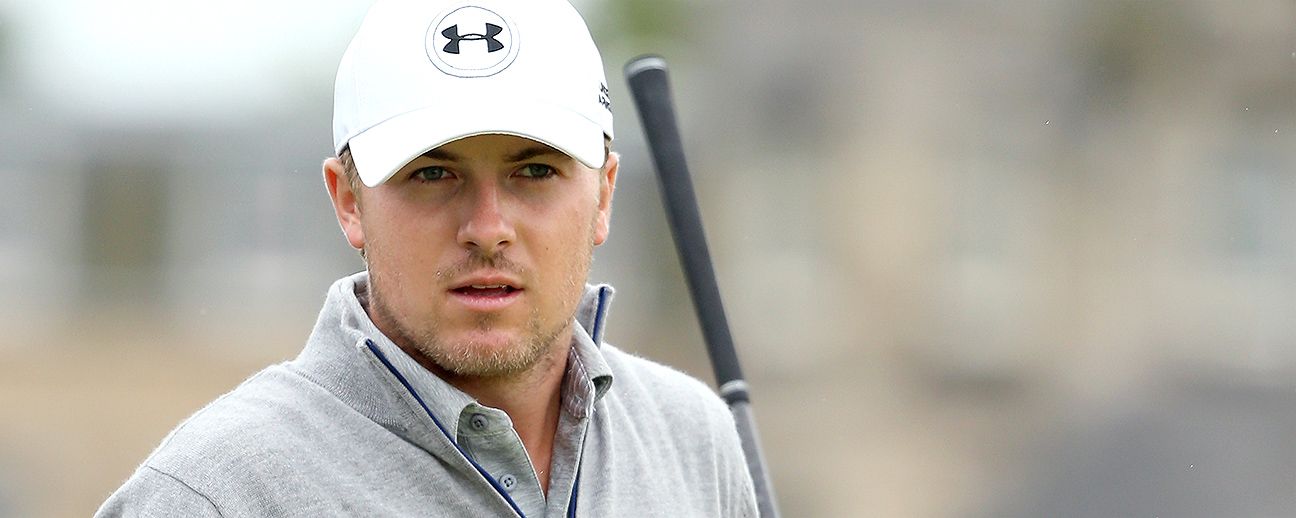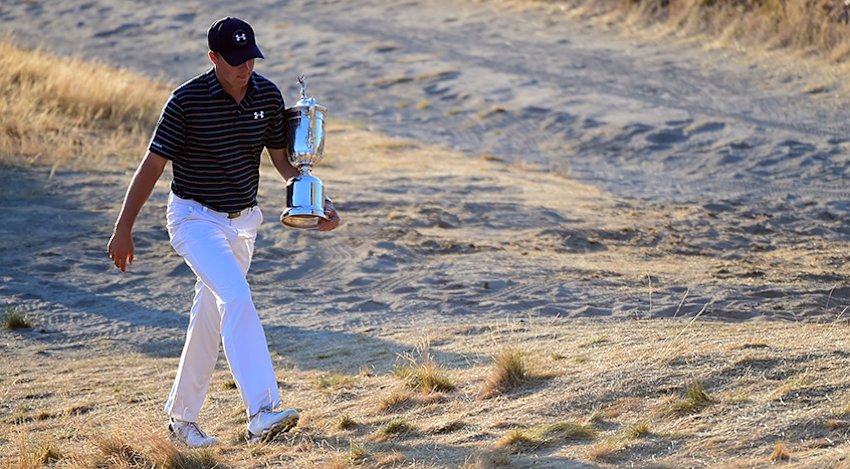Maybe it's Wimbledon ending Sunday with spectacular wins or maybe it's the world not recognizing what a rare opportunity Jordan Spieth has, but his pursuit of the Grand Slam does not feel like it's getting the play it deserves.
 Gene Wojciechowski of ESPN.com takes the big picture route and compares Spieth to fellow Texan Ben Hogan, talking to Dan Jenkins.
Gene Wojciechowski of ESPN.com takes the big picture route and compares Spieth to fellow Texan Ben Hogan, talking to Dan Jenkins.
That was Hogan personified, said Jenkins, who has covered more than 200 majors during his distinguished career. In Hogan's mind, his scorecard was the standard in which all other scorecards should be judged.
"Often it was," Jenkins said. "But sometimes it wasn't, and Ben would accept that, too, as being part of the game and graciously congratulate the winner."
Graciousness is a Spieth trait. Someone once asked him about his humility. Spieth responded that to talk about humility defeated the purpose of humility itself.
Who says something like at age 21?
Ryan Lavner at GolfChannel.com talked to other players about the challenge of learning the Old Course on short notice and includes some telling comments about what players think of the task facing Spieth.
Spieth visited the press room early and was his usual eloquent, introspective self. Though the mentions of "feels" could prove to be the first early sign of trouble. Ryan Herrington on the feels word and what it might mean.
Hmm?!? Good to know that there is a thing called "feels" and that it can "travel."
And travel, indeed it did, from Woods to Spieth. As he tries for the third leg of the calendar Grand Slam, Spieth was asked about arriving on Monday and whether there were positives of playing the John Deere and getting to St. Andrews late.
"Not necessarily, other than going to a place I was familiar with, I could get in contention and get the right feels."
Alex Myers at GolfDigest.com considers the Grand Slam ramifications in his watch of the historic chase and noted that Spieth opened the door to some concessionary views that the Old Course is complex and that the simulator was not an accurate representation of reality.
And he doesn't sound like he's had enough time dealing with St. Andrews' winds -- an area which Tiger Woods said experience is most crucial -- either on his simulator:
"The course was a lot easier with 68 degrees and no breeze coming out of the air-conditioner in that room, so I got over here, and the real preparation really started."
Rex Hoggard played off of Jordan's comments about studying the history of the game and knowing what is on the line.
As Spieth has proven in his short career, he’s a quick study when it comes to high-pressure situations – like when he converted his disappointment over his loss in the 2014 Masters into his first major championship earlier this year at Augusta National – and with the world watching he seems to have struck an impressive balance between competitive indifference and situational awareness.
“I like to study the history of golf, and I think it's extremely special what this year has brought to our team and to have a chance to do what only one other person in the history of golf has done doesn't come around very often,” he allowed.
Ewan Murray notes in his Guardian story that Spieth's attitude toward the wind forecast is to embrace the coming trouble.
Spieth also brushed aside the prospect of strong gusts, possibly up to 40mph, disrupting his game. “I think it’s fun,” Spieth said. “If we wanted good weather we’d go play in California.
“We come over here because we want to embrace the opportunity of handling these conditions. I understand that there’s a possibility for a lot of this tournament to be dependent on the draw the first two days, at least for a few strokes. It doesn’t mean you can’t make it up if you get the bad end of it, but it will be harder. Nobody is going to know what that is here because it changes hourly.
Update on 2015-07-15 22:42 by Geoff
**Todd Lewis reports on Morning Drive that Spieth hired a St Andrews "expert" to help him better learn the golf course.
 Rovell writes:
Rovell writes:
























